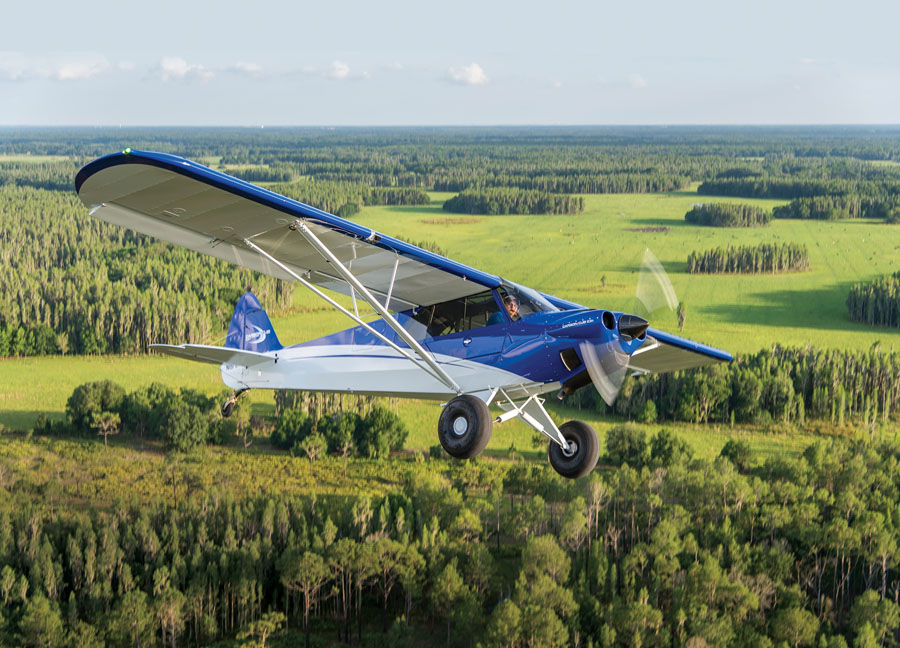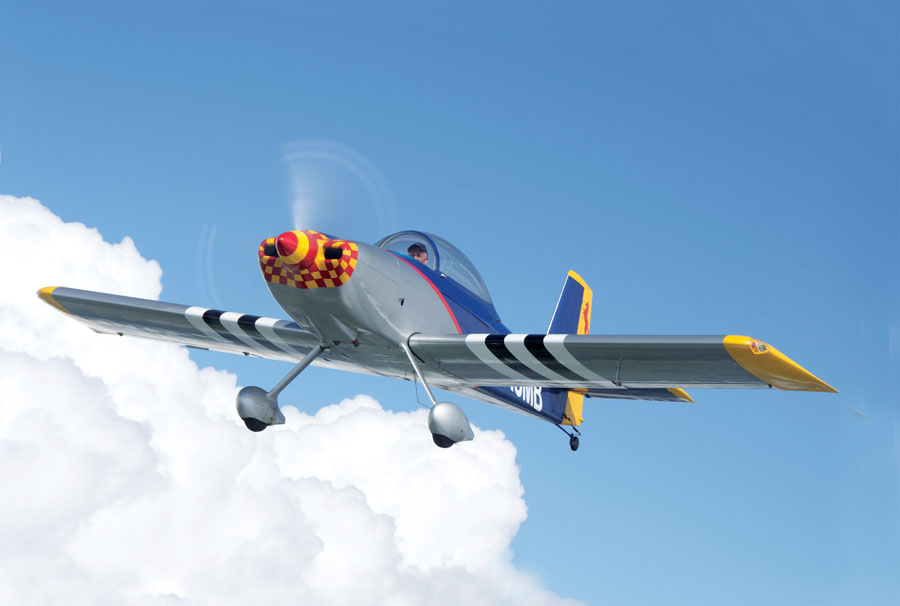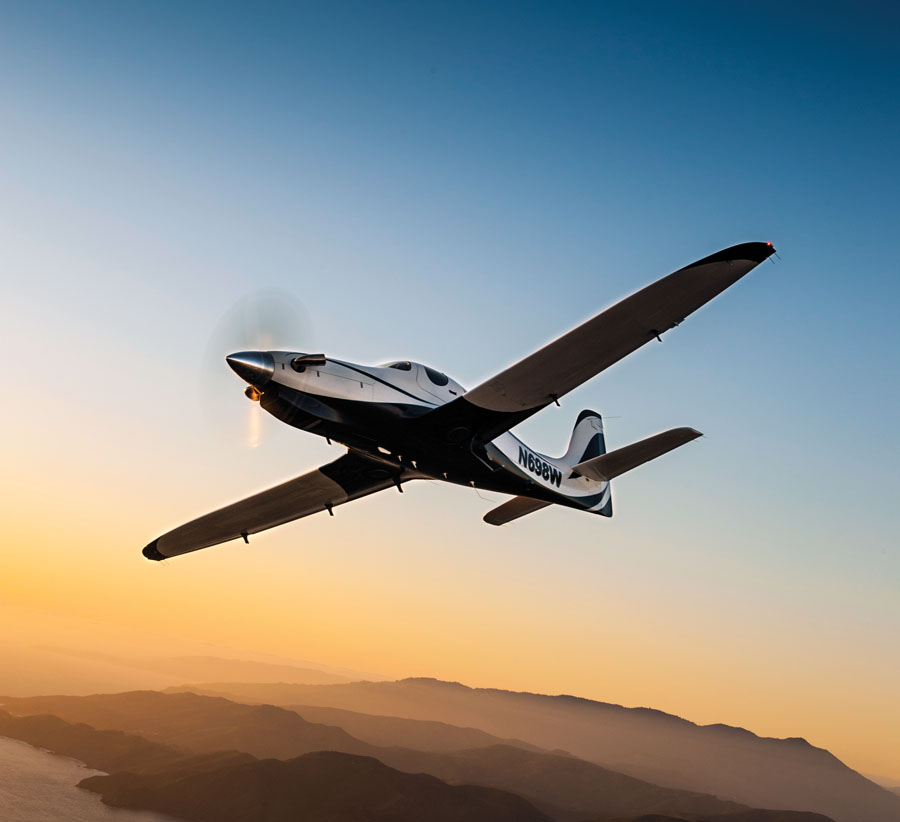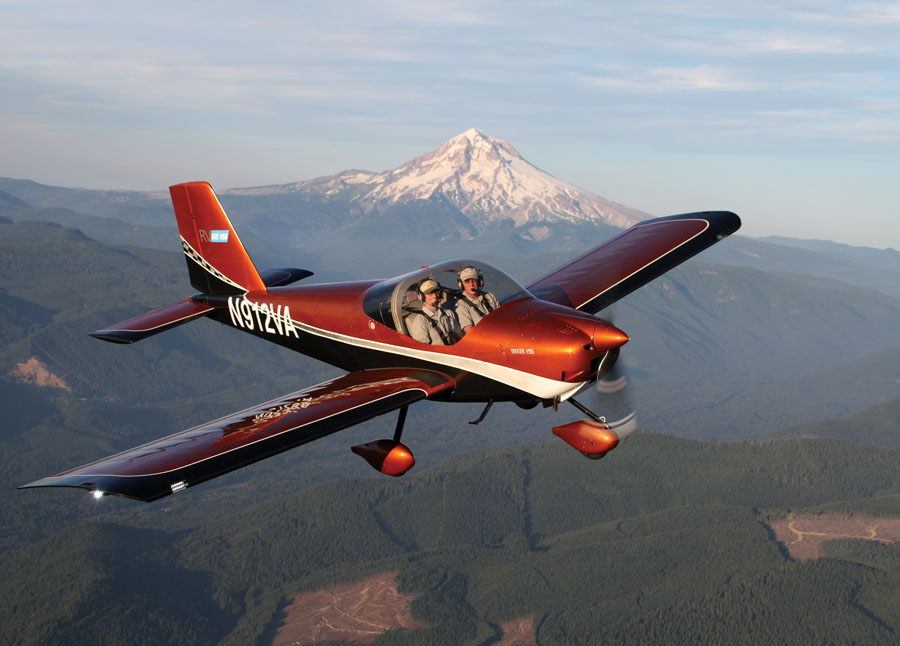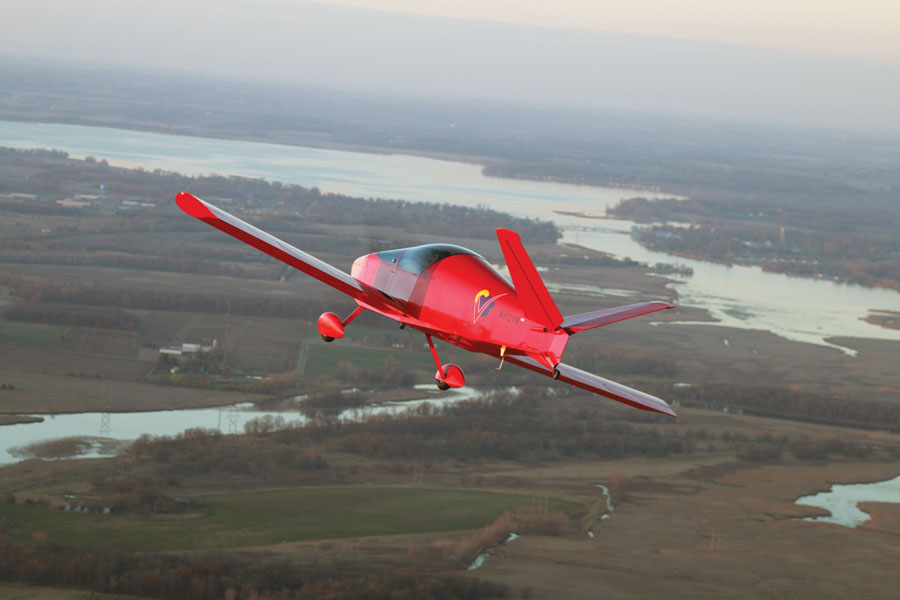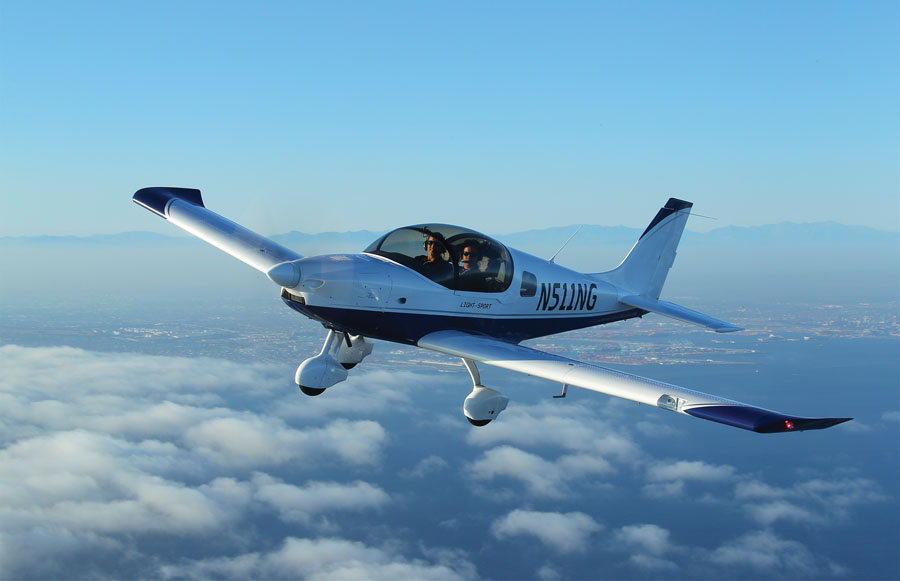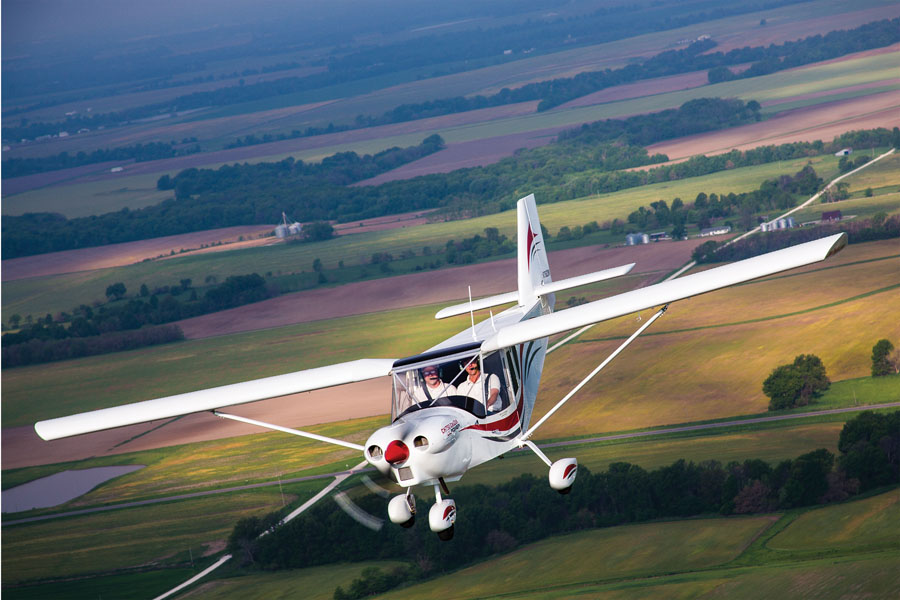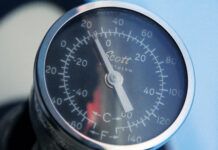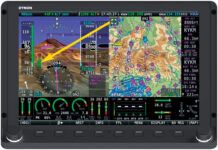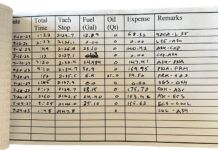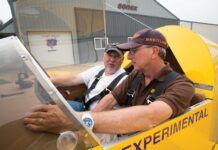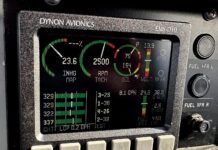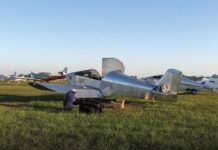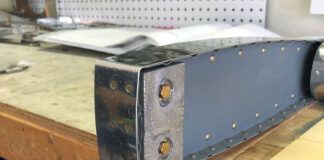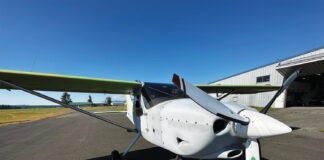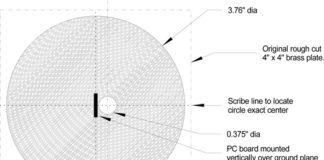Winds aloft generally switch to a more westerly direction and increase in strength at higher altitudes, so we tend to seek a high cruising altitude when headed east and a lower altitude when going west. (Photo: Richard VanderMeulen)
Flight planning invariably includes choosing an expected altitude for the trip and varying it as necessary for anticipated terrain encounters and ATC requirements. The question at the outset will often be, shall I go as high as practical, or as low as I can? Many factors enter into the decision, with each trip having du jour considerations to be applied.
Some of the weather factors going into the mix when picking an altitude are the day’s expected winds and temperatures aloft, low-level turbulence, cloud type and height, and flight visibility. Obviously, IFR capability opens up some altitude choices that may not be available to VFR operators, but filing instruments also requires added consideration of airframe icing, minimum en-route altitudes, and selection of alternate airports. In any case, weather can play a big role in choosing an altitude for the trip.
Most likely, there will no single altitude applicable to the full duration of any trip of appreciable length. You can level off at an altitude that you hope will work, but seldom will you be able to stay there for the duration. During the 3-hour final leg into AirVenture 2018, I changed my cruising altitude a half-dozen times, mostly to avoid inconvenient clouds. On the return leg outbound after the show, I climbed to 6500 feet and sat there undisturbed for nearly 4 hours. One can only plan and hope; the weather is what it is, not what it’s forecast to be.
If your airplane has good climb performance, there’s no reason to dillydally down low in hot, rough, and hazy conditions. (Photo: Ed Hicks)
Weather notwithstanding, your airplane’s characteristics and capabilities can lead you to choose an altitude that you know your plane likes. Editor Paul Dye says that his RV optimizes at around 10,000 feet msl, where there’s less drag, smooth air, and yet sufficient remaining horsepower for efficient cruising. An airplane with strong climb capability, able to reach a height of 2 miles above the takeoff airport’s elevation in 15 minutes or less, makes selection of thin-air altitudes an easy option, while a low-powered homebuilt, or one with a diminutive wing area, might have to struggle to climb 10,000 feet in a half hour, so its pilot tends to stop the climb early.
And then there’s plain old pilot preference. Some VFR pilots just like to stay low enough to see landmarks easily, while others want to remove themselves from earthbound considerations, flying up where it’s cool and smooth. I usually fly by the “hemorrhoid rule,” leveling off only after the bouncing of rough air abates.
Few experimentals can reach FL 280 like this Turbine Evolution, but many non-turbocharged piston engines give good performance up through 7000 to 10,000 feet. (Photo: Richard VanderMeulen)
Is It Legal?
There is, of course, a more serious legal obligation to maintain a cruising altitude appropriate to our direction of flight as defined by the “hemisphere rule.” Said regulation, codified as FAR 91.159 and 91.179, mandates that if we are in level cruising flight at more than 3000 feet above ground level, we must maintain, under VFR, an odd thousand feet of altitude plus 500 feet if flying a magnetic course (not heading) between 0 and 179 degrees. To somewhat minimize head-on attacks, airplanes flying a magnetic course lying between 180 and 359 degrees must maintain even thousands of feet plus 500. If flying IFR, you are to maintain the ATC-assigned altitude or, in uncontrolled airspace, odd thousands of msl altitude on courses between 0 and 179 degrees and even thousands between 180 and 359.
Bear in mind that a 3500-foot msl eastward cruising altitude is obligatory only if the ground elevation is 500 feet or less; if the terrain is higher than that, 3500 is up for grabs by airplanes flying in any direction. Say, for instance, you depart from an airport with a field elevation of 1100 feet and head eastward over similar flatlands; upon climbing past 3,600 feet, you are required to continue the climb to at least 5500 feet if cruising VFR. And if you wish to go higher, your next legal altitude is 7500 feet, and then 9500 and so forth. If westerly bound (or northwesterly or southwesterly), you can use 4500, 6500, 8500, and on. Under IFR, omit the 500-foot suffix when filing; bear in mind that if operating by IFR as “VFR on top,” you must maintain an appropriate VFR altitude unless assigned otherwise.
Don’t get lackadaisical with your cruising level. I was buzzing along westbound at 4500 msl one day when I suddenly saw a bug-spot on my windshield sprout wings. A red V-tail Bonanza streaked past me, dead level, eastbound. I know exactly what he was doing because we’ve all been guilty of it. As the air below 3,000 feet agl started to get rough, he eased up a bit at a time to stay in smooth air, eventually rising to an illegal cruising altitude. Do not rely on the ADS-B In traffic display to protect you; make sure you’re at the right altitude.
Why Take the High Road?
Probably the foremost reason to climb high before leveling off is comfort. If your airplane has good climb performance, there’s no reason to dillydally down low in hot, rough, and hazy conditions. Given that navigation has been simplified by GPS courses depicted on flat-panel electronic charts, we can just disconnect ourselves from watching for water towers and railroad tracks, taking advantage of the cool, smooth air aloft. Tracking our magenta line will keep us oriented.
If negotiating with tall terrain, you’ll have no choice except to fly as high as it takes to stay out of the rocks. Even though you’re familiar with a lower route that will avoid the tallest peaks, don’t skimp on terrain clearance, particularly later in the day, when turbulence worsens. Don’t forget that winds blowing perpendicular to the ridgelines can generate some attention-getting downdrafts on the lee side of the crest; 2000 feet of clearance as you cross over may be barely enough.
Topping weather is a good reason to seek a high cruising altitude. Getting up high to avoid weaving around cumulus, or to get out of the haze and smoke trapped in an inversion layer, improves flight visibility to a more comfortable level. In thunderstorm weather, getting high enough to clear the lower clouds lets us see the heavy rain shafts and ugly buildups so we can plan deviations earlier.
In mountainous terrain, fly as high as it takes to stay out of the rocks. Even on lower routes that avoid the tallest peaks, don’t skimp on terrain clearance, particularly later in the day when turbulence worsens. (Photo: Paul Dye)
How High?
In general, non-turbocharged engines give good cruising power up through 7000 to 10,000 feet, depending on what percentage of rated horsepower you want to use. With the lessened aerodynamic drag from the thinner air, you can pick up 10 knots over using the same power down low. Again, every airplane has its sweet spot, depending on the wing’s aspect ratio, the engine’s ability to breathe, and the propeller design.
Turbocharging makes it easier to use higher altitudes, not just because power remains available at greater height, but because the climb rate remains fairly constant, instead of falling away as would be the case when a non-turbocharged airplane’s climb power drops off. Until reaching the turbo’s critical altitude, where the controlling wastegate is fully closed and power finally begins to decrease, the turbocharged airplane just keeps going up. The downside of turbocharged altitudes is the need to use supplemental oxygen as you exceed your own “critical altitude” in high-altitude cruising.
If you’re only flying 25 miles to get a hamburger, there’s not much point in climbing to 6000 feet agl, just to come back down again. (Photo: Mariano Rosales)
Why Go Low?
Flying low is great for sightseeing. At 1500 feet or so above the ground, one gets to peer down into backyards and timber clearings, where there’s a never-ending panoply of vistas opening up as we cruise along. I can get bored when flying at high altitude, but there’s always something to keep my attention down low.
Obviously, most low-level flying is done early in the day, before the thermals build up, or just before sunset, when the earth cools and winds drop off. Light homebuilts like a Pietenpol are perfectly suited to these fun-oriented flights. We may not have the horsepower to buzz up above 5000 feet agl, but there’s nothing to see up there anyway. If your little airplane makes minimal noise impact, there’s no reason not to drop down to 500 or 1000 feet over open countryside and check out everything. And if you’re flying with an open cockpit, you may need to stay low to keep warm.
Most low-level flying is done early in the day, before the thermals build up, or just before sunset, when the earth cools and winds drop off. (Photo: Richard VanderMeulen)
Slow is best when cruising at low level. A 200-mph Lancair covering a mile every 20 seconds doesn’t leave much time for sightseeing down low, but a Kitfox at 500 feet is a perfect platform.
Another reason to fly at low altitude is weather avoidance. If flying VFR, it’s necessary to stay 500 feet below the cloud bases, not just to be legal, but to improve forward visibility. Low-level navigation can be a challenge unless you’re following a major roadway or other line of position, but the pervasiveness of GPS has taken a lot of uncertainty away from wandering along down low. Just remember the reduced forced-landing options when you give up altitude; don’t blindly follow the magenta line across stretches of unlandable terrain or water.
Even instrument pilots fly low occasionally. Many times, I’ve flown IFR at the lowest altitude available just to stay clear of icing in the colder clouds up high. Bear in mind that others may be trying to do the same thing, so ATC might have to move you up for traffic reasons. Know what the MEAs are along your route, and be prepared to use them, even if radar contact may be lost by doing so.
When flying VFR, you must remain clear of clouds. In Class E airspace, the minimum distance is 500 feet below, 1000 feet above, and 2000 feet horizontally. (Photo: Kevin Wing)
Fighting strong winds on a westbound route sometimes requires flying low, sacrificing some comfort in order to build up a fuel reserve. Winds aloft generally switch to a more westerly direction and increase in strength at higher altitudes, so we tend to seek a high cruising altitude when headed east and a lower altitude when going west. That said, every day is different, and there are exceptions to the usual expectations.
Pressure-pattern flying used to be a more-common cross-country technique, when one chose an easterly route around the north side of a high-pressure area to gain a tailwind and flew south of a low for the same reason (speaking strictly of flying in the Northern Hemisphere). Going westbound, we would seek out a pattern that would give an easterly tailwind, over the top of a low or around the bottom of a high. At low altitude, friction effect tends to move winds aloft directions more in line with the surface winds reported by ASOS broadcasts.
Flying low is great for sightseeing. If your airplane makes minimal noise, there’s no reason not to drop down to 500 or 1000 feet over open countryside. (Photo: Notley Hawkins)
Choosing a cruising altitude is a mix of considerations: the purpose of the flight, the prevailing weather, the importance of comfort, the capability of the aircraft, and the wishes of the pilot. If you’re only flying 25 miles to get a hamburger, there’s not much point in climbing to 6000 feet agl, just to come back down again. On the other hand, if you’re making a 3-hour trip, why not go up to the airplane’s best altitude to gain efficiency and comfort? In general, if one-third of the trip can be spent in level flight, I’ll consider the high-altitude option. But sometimes we just feel like flying low…


